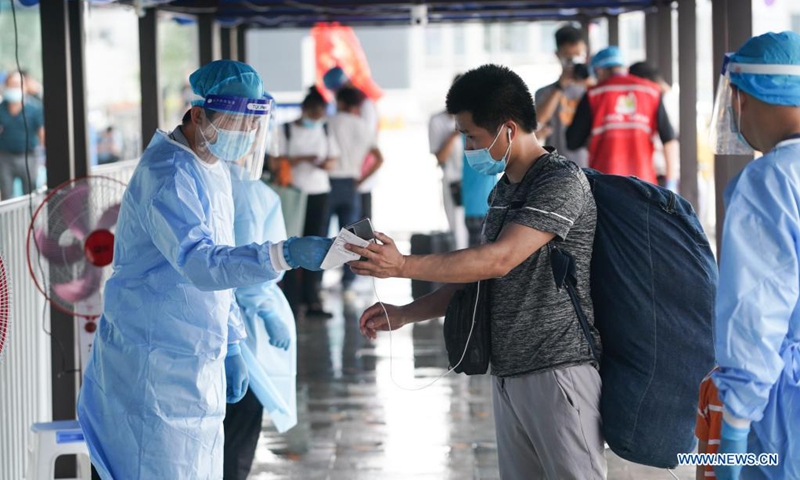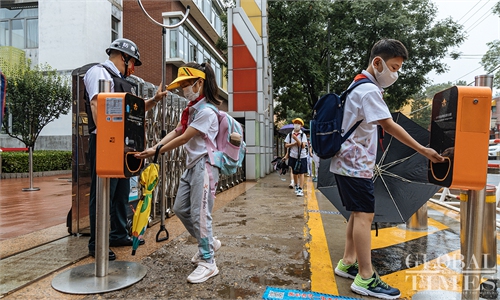Changes in travel tracking marks ‘refined methods’ of ‘dynamic-zero,’ suit new realities: CDC expert

Staff members check a passenger's identity information and health code at Nanjing Railway Station in Nanjing, capital of east China's Jiangsu Province, Aug. 23, 2021. (Xinhua/Ji Chunpeng)
China shortened the quarantine time for international arrivals and canceled marking cities with COVID infection risk areas in the travel tracking system in two consecutive days, but these adjustments do not mean China has changed its "dynamic zero COVID" strategy or that it's a relaxation in epidemic prevention, but refined and optimized methods to meet current needs, said Wu Zunyou, top epidemiologist with the Chinese Center for Disease Control and Prevention.
Wu made the remarks on his personal Sina Weibo account on Thursday, following the halved collective quarantine on Tuesday and adjustment in travel history tracking on Wednesday, which some believed signaled a change in the direction of China's epidemic control strategy.
Wu noted these new policies are not a relaxation of epidemic control, giving up "dynamic zero COVID" or adopting a hands-on approach, but adjustments made in line with new realities in global pandemic situation and domestic COVID prevention. They are refined and optimized methods and conform to current needs, demonstrating the precise control principle.
Canceling the asterisk mark in travel history tracking for people from places with areas of infection risks won't bring about new epidemic risks, because the asterisk was only to mark a person's travel history in unity of cities but did not indicate one's real health situation.
Such marks play their role when the epidemic is severe and complicated as it can help identify people who have infection risks. But when scientific and precise control requirements are higher, such marks, being designated in unit of cities and even municipalities, cannot reflect a traveler's infection risk in a precise way, Wu explained.
Taking off the asterisk has nothing to do with quarantine for international arrivals and close contacts. There were extra restrictions in some places -- quarantine all people whose travel tracking are marked. Wu urged local governments to stop upping the ante in their control methods.
The expert also stressed the move will encourage personnel exchanges and help revitalize economy, better coordinate epidemic prevention and economic and social development. There will be no excuse for some areas to carry out stricter control measures with mindset that epidemic control dominating everything, Wu wrote.
Global Times



